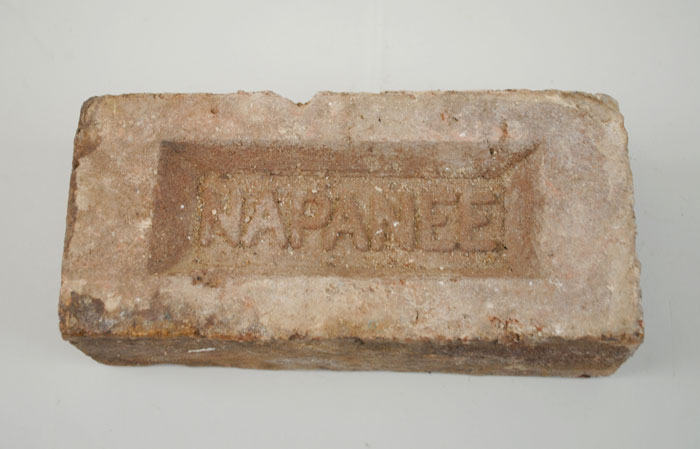
Towns & Industry (1860-1880)Napanee Brick & Tile Works |
|||
|
|||
A Napanee Brick from the Napanee Brick & Tile Works |
Napanee streets are lined with substantial brick houses, and businesses, many built during the lumbering, wheat and barley booms of the nineteenth century. The story of the Napanee Brick and Tile Works began in June 1869, when George Whittington, a former school teacher, purchased six acres along the river in the Township of North Fredericksburgh. The clay on this site was suitable for brick making, and Mr. Whittington knew there was a need for bricks in the booming town of Napanee during this post confederation period. To capitalize on this need, he opened George W. Whittington Brick & Tile. DISCOVER MORE![]()
Brick making was completed by hand, and clay was taken from the riverbank with picks and shovels before being stacked in piles, soaked in water, and left to stand for several days. Bricks were then moulded individually, and stacked in piles of up to one hundred thousand. During a single day, an efficient worker could produce one thousand bricks. Once enough bricks were manufactured, the piles were burned, and shipped out by wagons or barge to be used for construction.
Technology replaced the hand making process in 1885 when George Whittington purchased a horse powered soft mud machine. The horse powered pug mill could mix clay in greater quantifies, and filled the moulds. Then, the moulds were emptied on pallets and wheeled away to dry. Five bricks could be produced in the mould with each revolution of the horse. Later, drying racks were installed to protect green bricks from the rain. Shortly thereafter George W. Whittington Brick & Tile began creating drain tile to be used by farmers and house builders.
In 1906, Mr. Whittington built his first beehive kiln, which included six smokestacks. The new kiln was a great improvement for drying bricks. The beehive kiln operated on an updraft principle, and several fires were lit in arches around the base, and smoke climbed the dome while heat was sucked down through the bricks to a grill in the floor that lead outside to the chimneys. After firing for seven days, bricks were cooled, removed, and ready for sale. Mr. Whittington placed the trade mark G.W. on the bricks he produced.
A group of businessmen from Montreal purchased the company in 1913, reorganizing, and changing its name to the Napanee Brick and Tile Works Limited. Bad advice from a consulting firm in Indiana lead to the purchase of brick drying machinery unsuitable for Napanee clay, and the resulting bricks were poor, and the company faced bankruptcy. In 1915, Mr. Frank Clark purchased the brick yard and made John Chapman his foreman. Despite Clark's efforts, the brick yard remained unprofitable, and the company was returned to George Whittington. After negotiations, Mr. Whittington convinced John Chapman to purchase the company by 1920. Mr. Chapman changed the company back to the soft-mud process for which the plant was originally intended, and brick quality improved. Slowly the brick yard became profitable again, and the Napanee Brick and Tile Works has remained in the Chapman family ever since.
© Lennox & Addington County Museum & Archives
97 Thomas Street East, Napanee, Ontario, Canada K7R 4B9
Funding provided by the Government of Ontario and the County of Lennox & Addington




